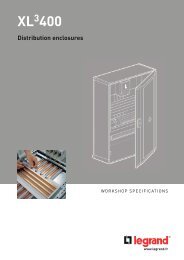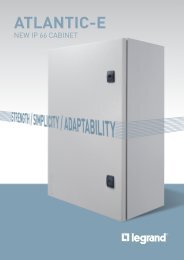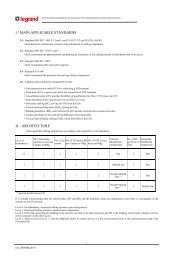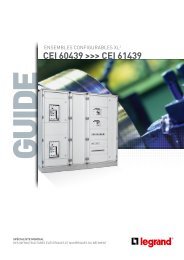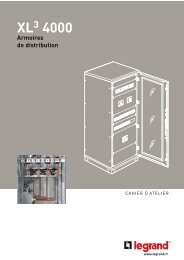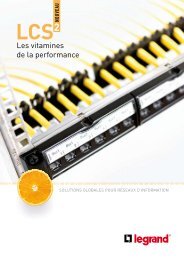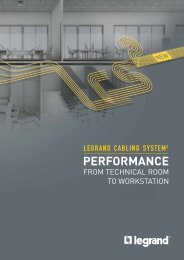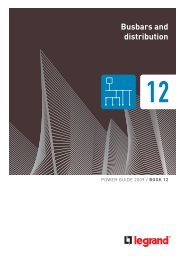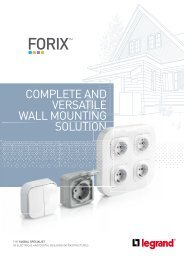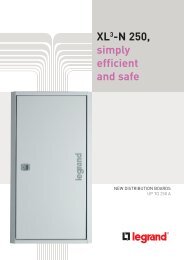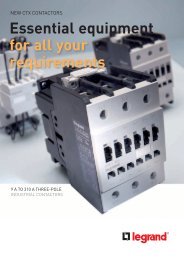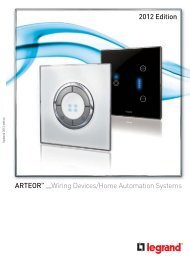Download - legrand
Download - legrand
Download - legrand
You also want an ePaper? Increase the reach of your titles
YUMPU automatically turns print PDFs into web optimized ePapers that Google loves.
HOW TO IMPROVE THE POWER FACTOR<br />
By installing capacitors or capacitor banks.<br />
Improving the power factor of an electrical installation<br />
consists of giving it the means to "produce" a certain<br />
proportion of the reactive energy it consumes itself.<br />
There are various different systems for producing<br />
reactive energy, including in particular asynchronous<br />
compensators and shunt capacitors (or serial capacitors<br />
for large transmission systems).<br />
The capacitor is most frequently used, given:<br />
- Its non-consumption of active energy<br />
- Its purchase cost<br />
- Its ease of use<br />
- Its service life (approximately 10 years)<br />
- Its low maintenance (static device)<br />
Equations<br />
Q2 = Q1 - Qc<br />
Qc = Q1 - Q2<br />
Qc = P.tg ø 1 - P.tg ø 2<br />
Qc = P(tg ø 1-tg ø 2)<br />
ø 1 phase shift without capacitor<br />
ø 2 phase shift with capacitor<br />
The capacitor is a receiver composed of two conductive<br />
parts (electrodes) separated by an insulator.<br />
When this receiver is subjected to a sinusoidal voltage,<br />
the current and therefore its power (capacitive reactive)<br />
is leading the voltage by 90°.<br />
Conversely, for all other receivers (motors, transformers,<br />
etc.) the current and therefore its power (reactive inductive)<br />
is lagging the voltage by 90°.<br />
GENERAL INFORMATION<br />
Power diagram<br />
Qc<br />
The vectorial composition of these currents or reactive<br />
powers (inductive and capacitive) gives a resulting<br />
current or power below the value which existed before<br />
the capacitors were installed.<br />
0<br />
ø2<br />
ø1<br />
P<br />
Av<br />
AR<br />
S2<br />
Q2<br />
U<br />
In simple terms, it is said that inductive receivers<br />
(motors, transformers, etc.) consume reactive energy<br />
whereas capacitors (capacitive receivers) produce<br />
reactive energy.<br />
Qc<br />
P: Active power<br />
S1 and S2: apparent powers<br />
(before and after compensation)<br />
Qc: capacitor reactive power<br />
Q1: reactive power without capacitor<br />
Q2: reactive power with capacitor<br />
S1<br />
Q1<br />
9



